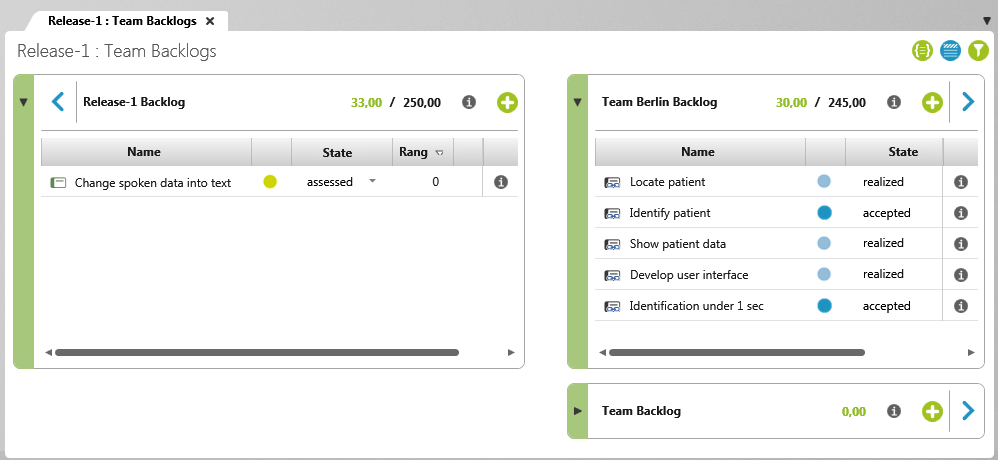View „Release Backlog“
Typically several releases and sprints are implemented in one project. Requirements contained in the domain or team backlogs can be moved to releases. A release backlog thus contains the requirements that are to be implemented in a release.
You see:
- Which requirements are in a backlog
- Which requirements are related to each other
- total effort for the requirements in a backlog
- planned workload of the activity if the backlog is linked to an activity
You can:
- Drag and drop requirements to another backlog or create references
- Group and sort requirements
- Edit, derive, refine requirements,
- Create new requirements
- Navigate to other views
By default, this view displays all requirements from the package Requirement Definition of domain/ Requirements or Use cases.
The Release backlog view is divided into two areas. On the left there is a (domain) backlog and on the right you can see the backlogs of your releases. Distribute all release-relevant requirements from the domain backlog (left) by simply dragging and dropping them onto the individual releases (right). You can decide whether the requirement should be moved or whether a reference should be created.
The Move command removes the requirement from the source container and moves it to the target container.
If you choose Create reference instead, the requirement remains in the source container and a reference (link) is created in the target container. The reference is identified with acorresponding icon. As soon as you move requirements to another backlog, you can see at the top of each container how much work is involved in the requirements and whether the activity – if one is assigned – is overplanned or not.
If you want to add more or different columns, configure the view using the Edit command in the context menu.

